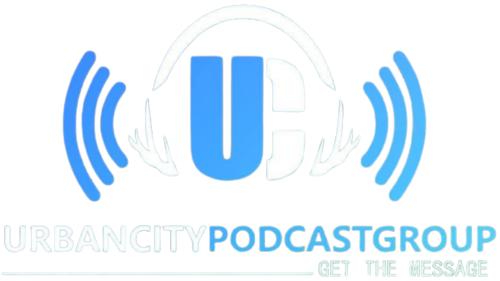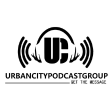Key Takeaways
- The economic system often favors the wealthy through mechanisms like tax breaks and investment perks.
- Individuals can drive change by staying informed and choosing leaders who understand economic disparities.
- Community involvement and understanding policy impacts are essential for enacting change.
Navigating Economic Inequality
Feeling like the rich always have the upper hand in the economy? You're not alone. The game often seems rigged their way, with tax breaks, investment perks, and rules that help them stack up cash.
But don't get discouraged. You can play a part in turning the tide. By staying informed, voting for leaders who get it, getting involved in your community, and understanding the true impact of these policies, change is within reach. Want to know more?
Understanding Economic Inequality in the U.S
Understanding Economic Inequality in the U.S
Why does economic inequality seem so widespread in the U.S., and what does that mean for all of us?
It's something you see in the numbers: the richest 1% of households earn 139 times more than the bottom 20%. Income trends show that the top earners saw their income grow by 165% over recent decades, while those at the bottom saw much slower growth. Household income in the U.S. is unevenly distributed, illustrating significant inequality within the population. This isn't just about income; it's about wealth distribution too. Upper-income families have accumulated much more wealth, leaving others far behind. The racial wealth gap exemplifies these disparities, with Black and Latino families owning significantly less wealth compared to white families, as mentioned in recent studies. Similar to the historical and modern-day voter suppression challenges faced by Black and Brown communities, economic barriers further entrench disparities and limit opportunities for these communities.
Realizing this isn't just about reading statistics—it's understanding the reality many face daily. Knowing these differences can inspire you to ask questions and seek solutions that improve your community's economic health for everyone's benefit.
The Role of Structural Racism in Wealth Disparities
Economic inequality in the U.S. isn't just a financial puzzle; it's a tale that weaves through the threads of racial history.
Structural racism creates barriers that stop many families of color from building racial wealth. For instance, policies like redlining and racial covenants have made it hard for Black families to own homes, which is a major way to build wealth. This means that even if you strive for educational and economic success, you're starting at a disadvantage.
Also, these wealth gaps are passed down through generations, keeping the cycle alive. Black and Hispanic families also face limited access to financial assets like stocks, while higher unemployment rates and lower incomes further widen the gap.
Understanding this helps you identify the need for change. A strong emphasis on financial literacy can empower communities of color to navigate financial systems more effectively and establish a foundation for long-term prosperity.
Beyond GDP: Measuring Economic Well-being
Although Gross Domestic Product (GDP) might seem like the go-to for measuring economic progress, it doesn't tell you the whole story.
Beyond GDP metrics, like the Human Development Index, Genuine Progress Indicator, and Better Life Index, offer a richer look into societal well-being.
Here's why they matter:
- Comprehensive Well-being: Beyond GDP metrics capture health, education, and environmental impact that GDP ignores.
- Environmental Awareness: They account for environmental degradation, something GDP overlooks.
- Social Inclusion: They emphasize fairness and inclusivity, ensuring everyone benefits.
- Sustainability Focus: These metrics prioritize long-term health over short-term growth.
Governments worldwide are slowly adopting these methods, showing a shift towards enhancing well-being.
Adopt this knowledge, and advocate for a future where fairness and true prosperity go hand in hand.
Policy Interventions to Reduce Wealth Disparity
When it comes to tackling wealth disparity, we've got a toolbox full of effective policies. Let's start with tax reform. By implementing progressive taxation, where higher earners pay more, you can help redistribute income more fairly.
Capital gains taxation should align with income tax rates to guarantee fairness and fund public programs. Estate taxes target inherited wealth, making wealth distribution more balanced across generations. Expanding tax credits for low-income families is also a game-changer, lifting many out of poverty.
On education funding, investing in early childhood programs and increasing public education funding enhances workforce skills.
Subsidizing higher education and offering job training programs boost economic mobility. Together, these approaches can help level the playing field and create opportunities for everyone in our community.
Global Perspectives on Economic Inequality
Across the globe, income inequality has been on the rise, and that's not just a concern for economists; it's something that affects everyone.
The global scene reveals stark contrasts in income distribution and wealth concentration, with several factors amplifying these divides. You've noticed the impact on everyday life and communities alike:
- Income Disparities: The top 10% seize a huge portion of national income, leaving little for the majority.
- Stagnant Growth: Some regions, like Sub-Saharan Africa, face flat income growth despite global recovery.
- Rural-Urban Gaps: Fast-growing nations such as China and India show larger gaps between rural and urban areas.
- Wealth's Impact: Concentrated wealth hampers economic mobility and broad-based community growth.
Understanding these points helps unravel global inequality's complexity.
Conclusion
Bridging the Wealth Divide
It's understandable to feel the pressure of economic inequality. Did you know the top 1% possess more wealth than the entire middle class combined? This is a significant issue, but there's hope for change. By supporting leaders who prioritize equitable economic policies and backing initiatives aimed at narrowing this gap, you hold the power to make a substantial impact. Conversations are catalysts for change, so keep discussing, educating, and championing a fair opportunity for all. Remember, together, you're crafting a brighter and more equitable future. Let's make it happen!










